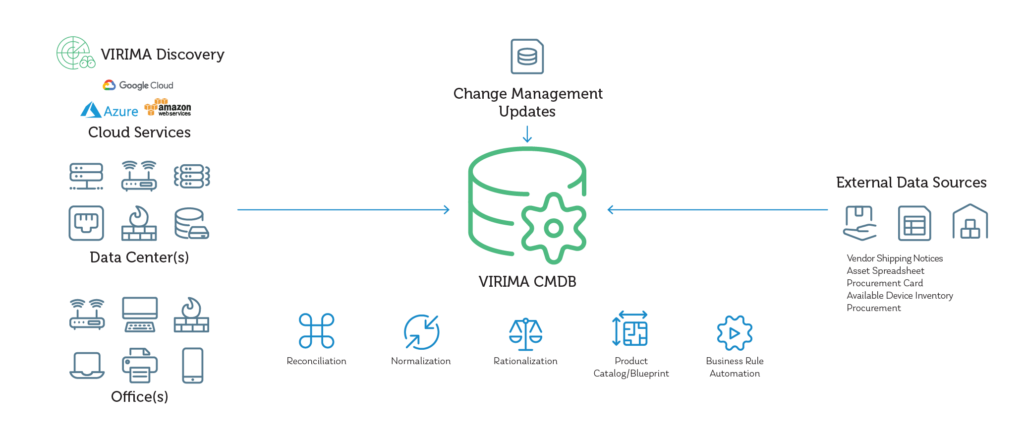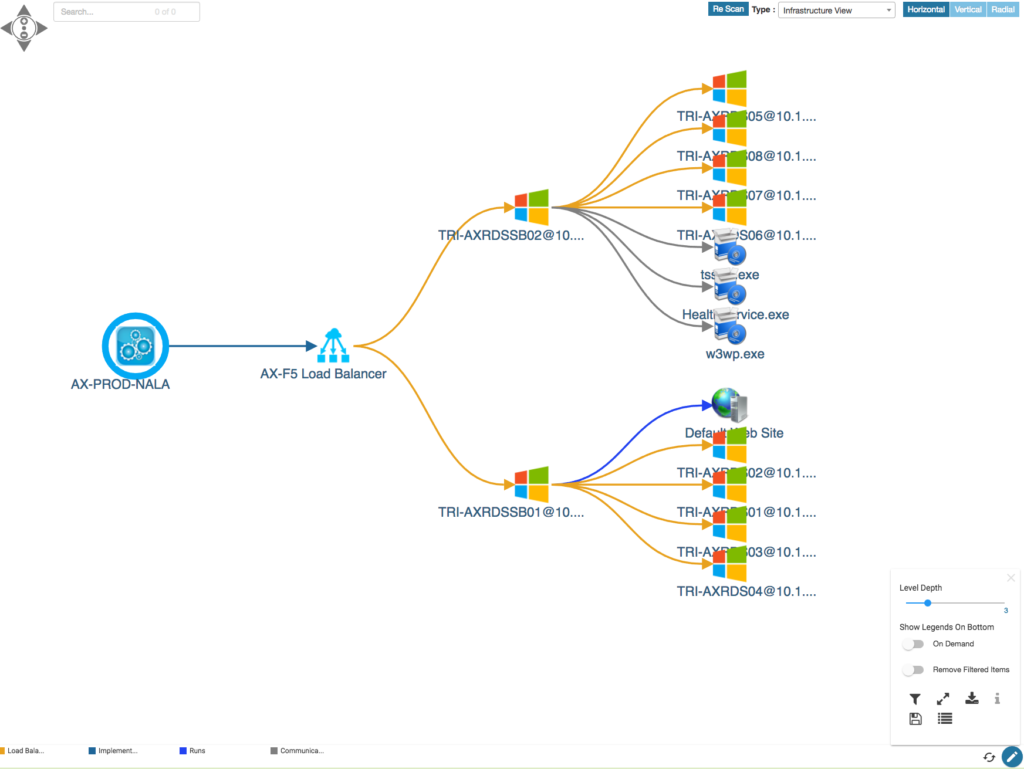These are capabilities not usually available to an ITAM team and will offer a fresh perspective on your estate, and potentially enable you to engage closely with stakeholders in Security, Compliance, and Config Management.
For organisations with security and compliance concerns the tracking of patch status and certificate expiry adds significant value. For example, expired certificates played a role in the billion-dollar Equifax breach. However, you should note that whilst VIRIMA can complete agentless scans of Windows and non-Windows machines through its 80-plus probes, detailed software usage data is only available for Windows machines running the Discovery agent. Overall, Discovery functionality is strong across the entire IT estate with the added flexibility of the Windows agent.
CMDB
Virima uses its automated discovery and inventory capabilities to build a Configuration Management Database (CMDB). The CMDB is built around the concept of blueprints. A blueprint in Virima is the means for describing a Configuration Item (CI). Standard blueprints are available out-of-the-box and users can create custom blueprints to meet their needs. This enables creation and tracking of custom fields, for example.
The strongest feature of Virima CMDB is the ability to dynamically build interactive visual maps of your environment, showing the interdependencies and relationships between CIs. For example, it is easy to build service descriptions and instantly see where a fault might lie through visual indicators of events such as a recent change or incident raised. Once built, service descriptions, dependency mappings, and Business Service maps will provide multiple stakeholders with key, timely, and up-to-date information about the environment. These visual depictions of your environment can be saved and shared with stakeholders very easily.
Software Asset Management
Virima provides adequate SAM capabilities, built from the foundations of Discovery & CMDB. Typical use cases such as license entitlements, deployment tracking, and usage and consumption reporting are available. Software recognition is accomplished through interrogating Add/Remove Programs data on Windows machines and via process discovery. The blueprint functionality means that the data stored about your software CIs is customisable, and it is possible to import data from other sources such as spreadsheets.
Within the Datacenter there is full support for discovery and inventory of virtualised environments including VMWare and Hyper-V. As with the CMDB functionality this includes an interactive visual representation of your environment. This extends to public cloud offerings such as AWS & Azure, making VIRIMA a viable tool for gaining visibility of your hybrid cloud infrastructure.
Virima lacks some advanced SAM features offered by dedicated SAM suites including automated license harvesting and generation of Effective License Positions. Compliance reporting is possible with custom reports that can be created with end-user skillsets.
Implementation & Time to Value
A primary strength of Virima is its availability as a turnkey SaaS service. All that is required to start gathering information is deployment of the agentless Discovery App Server and/or Windows Discovery agent to your endpoints. Virima has a strong API for building integrations. Critically, these can be two-way and this enables Virima’s Discovery and mapping capabilities to be used with other toolsets. This will be of interest to organisations looking to migrate away from a toolset, or improve the functionality offered by their existing tools. Virima estimates that a typical customer would have 1-2 administrators assigned to manage the tool which is in keeping with the resource requirements of other toolsets. Virima can optionally provide a full managed service direct to the customer, or via a partner. This direct-to-customer model means they can be responsive to customer needs and the customer benefits from deep first-party knowledge of the product. This aligns Virima with market trends towards Managed Services being used to drive value, typically at less cost than employing FTEs to manage the product in-house.
Conclusion
Virima is a strong mid-market to enterprise offering for organisations looking to go beyond a siloed ITAM solution. The CMDB functionality, and the visual mapping of your environment, is a particular strength. The turnkey nature of deployment and availability of expert Managed Services means that Virima can be closely aligned with customer success and start delivering results quickly. Pricing is competitive both against dedicated SAM suites and larger ITSM players. The product will particularly suit organisations that are starting their ITAM journey and who therefore don’t have the process and skills maturity required to extract value from a dedicated ITAM toolset. The platform approach to ITAM, placing it in the context of ITSM and Configuration Management is an increasing market trend and Virima is well-placed to deliver value to its target customer base.




